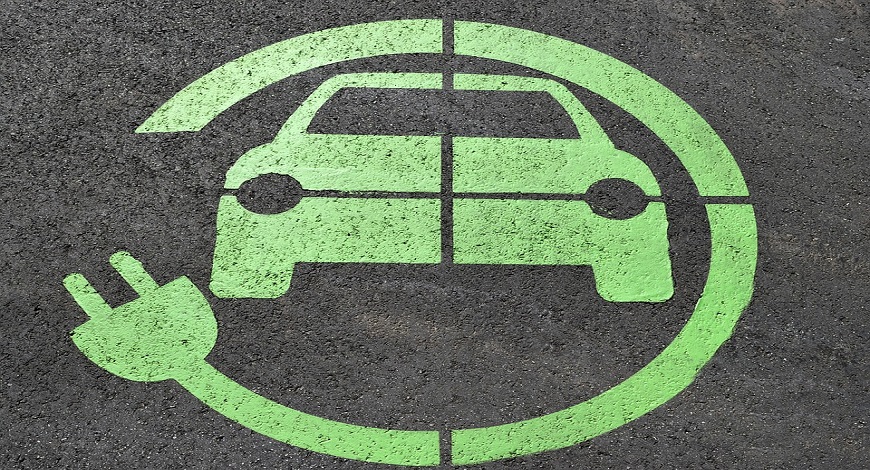
Table of Contents
Circular economy is not a new concept by any means. An age-old example is composting, which involves breaking down organic material, such as yard waste and food scraps, into a nutrient-rich soil additive that can be used to nourish gardens, farms, and landscapes. Through composting, people are able to reduce their waste and close the loop on material resources by creating a product that can be reused in their own gardens and yards.
The circular economy is nature’s own protocol and a dream for advocates of sustainability. It is an economic system premised on the “reuse and regeneration of materials as a means of continuing production in a sustainable and environmentally friendly way”. But to many, this concept seems too utopian to be realistic.
This article by LOHUM examines why the philosophy of circular economy is our only real hope of fostering a realistically sustainable utopia and driving a zero-waste energy transition, and how it can be made possible.
Circular economy in nature
Natural processes are inherently circular and cyclical, and all by-products of the cycle serve as inputs to other processes; nothing goes to waste. Plants utilize CO2, fixate nitrogen to the soil, replenish the soil they grow in, and microbes swoop in to decompose dead plant matter, layering the topsoil with nutrients for new flora to flourish.
Efforts to achieve a circular economy draw much inspiration from nature. Nature undertakes cyclical processing of carbon, nitrogen, and water by design. The timescales of the carbon, nitrogen, and water cycles vary depending on the specific process involved, ranging from a few days to thousands of years.
Carbon Cycle: The carbon cycle is relatively fast compared to other cycles, with a timescale of a few decades to a few centuries for the exchange of carbon between the atmosphere, land, and oceans. Some carbon can be stored for millions of years in fossil fuels, but once released into the atmosphere, it can circulate rapidly.
Nitrogen Cycle: The nitrogen cycle has a longer timescale than the carbon cycle, with a range of timescales from a few years to several thousand years. Nitrogen can be transformed into different forms, such as atmospheric nitrogen to nitrogen compounds in soil, through natural processes like nitrification and denitrification.
Water Cycle: The water cycle has the longest time scale of the three cycles, with a range of timescales from a few days for local precipitation and evaporation to thousands of years for deep ocean circulation. Water can be stored for long periods in glaciers and underground aquifers, but can also circulate quickly through the atmosphere, oceans, and rivers.
A common theme across these cycles is that they do not generate any waste. Natural cycles achieve a sustainable, cyclical system with no waste, by design, unlike humans of today. If we began creating the world around us with recyclability and sustainability built-in, we would achieve harmony in nature.
Unprecedented waste generation
The key force driving the circular economy movement is the enormous amount of waste and pollutants generated as byproducts of human technological growth. Nature has been contaminated to such an extent that we find microplastics in the deepest trenches of the sea, smog across continent-wide expanses of atmosphere, and cancer-causing agents across all biodiversity.
The world currently produces two billion tonnes of waste every year. While population growth is a contributing factor, reckless consumption, and gross mismanagement of finite and reusable resources are the foremost reasons for this planet-wide debacle.
The what, where, and why of waste
What is waste?
Worldwide waste generation is broadly split into Municipal solid waste, plastic waste, electronic waste, and food waste, according to reports by Statista. And as of 2018, packaging accounted for 46 percent of global plastic waste generation. Textiles take the second spot with approximately 15 percent of the share of plastic waste.
Where do we see waste every day?
The average person worldwide sees Municipal Solid Waste in our everyday lives, of which the largest chunk is food standing at 44%. Interestingly, Statista also reveals that developed nations like the US and Canada were the top producers of municipal solid waste in 2018. However, these nations have developed advanced waste processing and recycling infrastructure, resulting in progressively lower environmental contamination over recent decades compared to waste generation. This comes after decades of “out of sight, out of mind” waste exports from developed nations. Thankfully, global condemnation of dumping activities and stakeholder responses are increasingly pushing nations to find ways to process their waste locally and in an eco-conscious manner.
Why do we see so much waste?
Over the past century, societies worldwide have collectively embraced a culture of “use and throw” – irresponsible consumption without responsible oversight into where products end up after exhausting their usefulness. Of particular relevance is the effect of our technological activities on the carbon cycle.
How are humans generating waste in the carbon cycle?
Electricity, heat, and transport make up 73.2% of all GHG emissions worldwide. If you fly on average once per week then you contribute around 3 million tons of carbon dioxide into the atmosphere each year. In addition, if you drive your car each day then you will emit between 2 to 3 tons of CO2 into the atmosphere every single year.
Carbon emissions generated by rising energy demand are thus the key contributor to global warming and ecological strain.
Does this mean that it is a completely hopeless scenario? A handful of corporations are responsible for most of the pollution, so is the role of the public irrelevant? No, just the type of role and its scale is different.
Have humans begun reducing our detrimental impact on the carbon cycle?
Humans can contribute positively to the carbon cycle by reducing their carbon footprint and taking actions to sequester or remove carbon from the atmosphere. Almost all those actions will need to foster a closed-loop supply and demand of the materials that make up our world, to every extent technologically possible.
Governments and corporations are:
- Shifting towards renewable energy sources and reducing their dependence on fossil fuels.
- Catching on to new and effective trends in sustainability, and updating policies and legislation.
- Encouraging and incentivising circular economy amongst entire industries.
- Promoting sustainable agriculture and forestry practices that sequester carbon in soil and vegetation.
- Investing in waste management, recycling, and repurposing. This includes an increase in R&D budgets.
What YOU can do as an individual:
- Watch out for sustainable and environmentally-conscious products.
- Buy from companies that prioritize sustainability or turn waste into new products.
- Inspire and persuade political representatives, corporations, and businesses to adopt environmentally-conscious practices.
- Reduce energy consumption by using energy-efficient appliances.
- Begin composting your food waste.
- Avoid air travel for short-distances.
- Support reforestation and other carbon sequestration initiatives.
- Use public transportation, carpool with friends and family, or bike instead of driving.
Circular economy strategies that reduce and eliminate waste:
- Designing-out waste and pollution: Designing products and processes with the goal of minimizing waste and pollution, and ensuring that materials and resources are used efficiently.
- EPR Legislation: Extended Producer Responsibility mandates that manufacturers recover their end-of-life waste products from consumers and additionally utilize recycled material from end-of-life products to manufacture new goods.
That’s why India’s Battery Waste Management Rules (BWMR 2022) are a great example of circular economy legislation that mandates exactly that. If EPR could be applied to entire economies, the impact would be significant. Stay tuned to LOHUM’s Green Gazette as we will be churning out an article all about EPR.
- Reduce, Reuse, Recycle: Follow this classic maxim to extend the life of products through repair, reuse, and recycling, and reducing the need for virgin raw materials.
- Regenerating natural systems: Regenerating ecosystems and restoring soil health, play a key role in mitigating climate change by sequestering carbon.
- Relying on renewable energy: The energy transition to renewable energy sources such as solar, wind, and hydro power, and reducing reliance on non-renewable energy sources that contribute to greenhouse gas emissions.
How are we currently trying to move away from the carbon cycle?
Alternative ways of storing and delivering energy are gaining traction, led by Lithium-ion batteries. But these too have created environmental and humanitarian crises like our previous technologies. What’s worse is that we seem to have just created another one-way stream, thus continuing to generate a lot of waste.
That’s where Li-ion battery recycling and repurposing can serve as a ticket to a sustainable energy future given the fact that battery raw materials are unchanged in composition after a battery is dead.
LOHUM’s battery material recycling and extraction process recovers 95% of Li-ion raw materials from end-of-life cells, at 50% lower CO2e versus mining. Battery repurposing is a key pillar of sustainability at LOHUM, where cells from end-of-first-life Li-ion batteries are repurposed into new battery packs capable of powering Home or Industrial Energy Storage Systems, UPS, EV charging stations, and more. Battery repurposing at LOHUM saves 90% of CO2e versus mining for virgin raw materials.
Conclusion
By taking inspiration from nature and adopting a circular economy approach, we can create a clean and green planet by reducing waste, conserving resources, mitigating the impacts of climate change, and augmenting the natural processes that regulate ecological cycles.
Thus, the circular economy is also an indispensable driving force behind the world’s energy transition. Going closed-loop maximizes the life, value, and availability of battery raw materials for renewable energy storage.
Everyone from individuals to corporations and governments can contribute in the efforts towards the creation of a realists’ utopia on Earth. We hope that this overview has inspired you, and reminded you that you can make a difference, no matter where or who you are.
Stay tuned to the LOHUM blog for more sustainability, battery energy, energy transition, circular economy, battery recycling, and repurposing content!
Together, let’s make the circular economy the new normal!
Related blogs
This entrepreneur wants India to make its own lithium-ion cells for electric vehicle batteries

Forbes India
Rajat Verma already recovers raw materials from used cells at his venture, LOHUM Cleantech. He wants to close the loop by making cells in India as well.
India needs integrated recycling and repurposing battery business model: Rajat Verma of LOHUM Cleantech

YOURSTORY
In an interaction with AutoStory, Rajat Verma, Founder and CEO of LOHUM Cleantech, speaks about building his company, and about battery manufacturing and repurposing as an industry.
Sourcing Raw Materials Is A Big Challenge In Li-ion Battery Space: Founder Lohum

Business World Disrupt
Recognized as ‘The Most Innovative Company of the year 2022’ by The Confederation of Indian Industry (CII), LOHUM is a producer of sustainable Li-ion battery raw materials